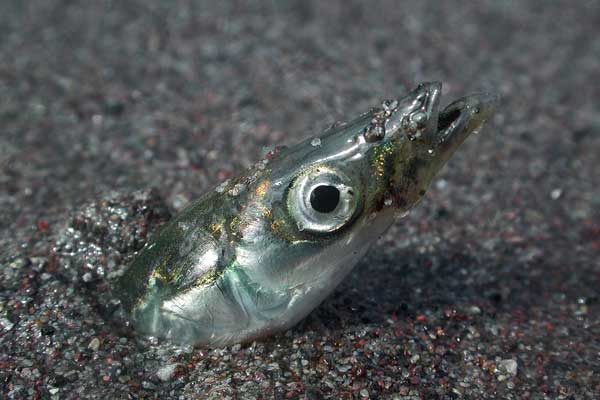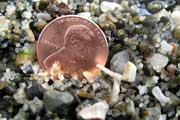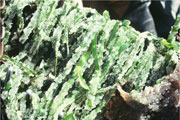Forage Fish: Unsung Heroes of the Salish Sea
A Vital Link in the marine food web

Photo by Mandy Lindeberg, NOAA/NMFS/AKFSC
Sand lance . . . surf smelt . . . Pacific herring—these small forage fish are a crucial food source for fish, marine mammals, birds, and humans.
In Fidalgo Bay, forage fish lay their eggs year-round on beaches and in intertidal areas, a risk-prone space they must share with wild and domesticated animals, beachgoers, and increasing shoreline development.
Disturbing or damaging forage fish habitats compromises their ability to reproduce. Fewer forage fish mean limited food supply for their predators, such as salmon, a species vital to the Northwest fishing industry.
Restoring damaged shorelines with natural logs, boulders, and vegetation—as the Samish Indian Nation is doing here—and re-establishing eelgrass in shallow bay waters help protect members of the marine food chain.

Photo by Ben Maticich
Forage fish have long been essential to Pacific Northwest diets and livelihoods. Anacortes fisherman Ben Maticich shows off the day’s catch of surf smelt from Fidalgo Bay in 1981.
This film, sponsored by Friends of Skagit Beaches and Wash. Dept. of Ecology, highlights the importance of forage fish to the ecology, economy, and identity of the Pacific Northwest.
Threats to Forage Fish
Vegetation removal
Removing deep-rooted vegetation along the shore increases erosion. Overhanging trees and shrubs shade forage fish eggs protecting them from drying. Shoreline vegetation drops leaves, limbs and insects providing food and shelter.
Dredging, pollution, and shading
Forage fish are highly vulnerable to shoreline use and development. Dredging, pollution, and shading by docks and piers can destroy or inhibit the growth of eelgrass beds necessary for spawning and protection of juvenile species.
Bulkheads
Bulkheads bury beach spawning areas, increase beach erosion, and interrupt the transport and renewal of fine beach sediments needed for spawning and coastal habitats.
Photo top of page by Dan Pentilla, Washington Dept. of Fish & Wildlife




